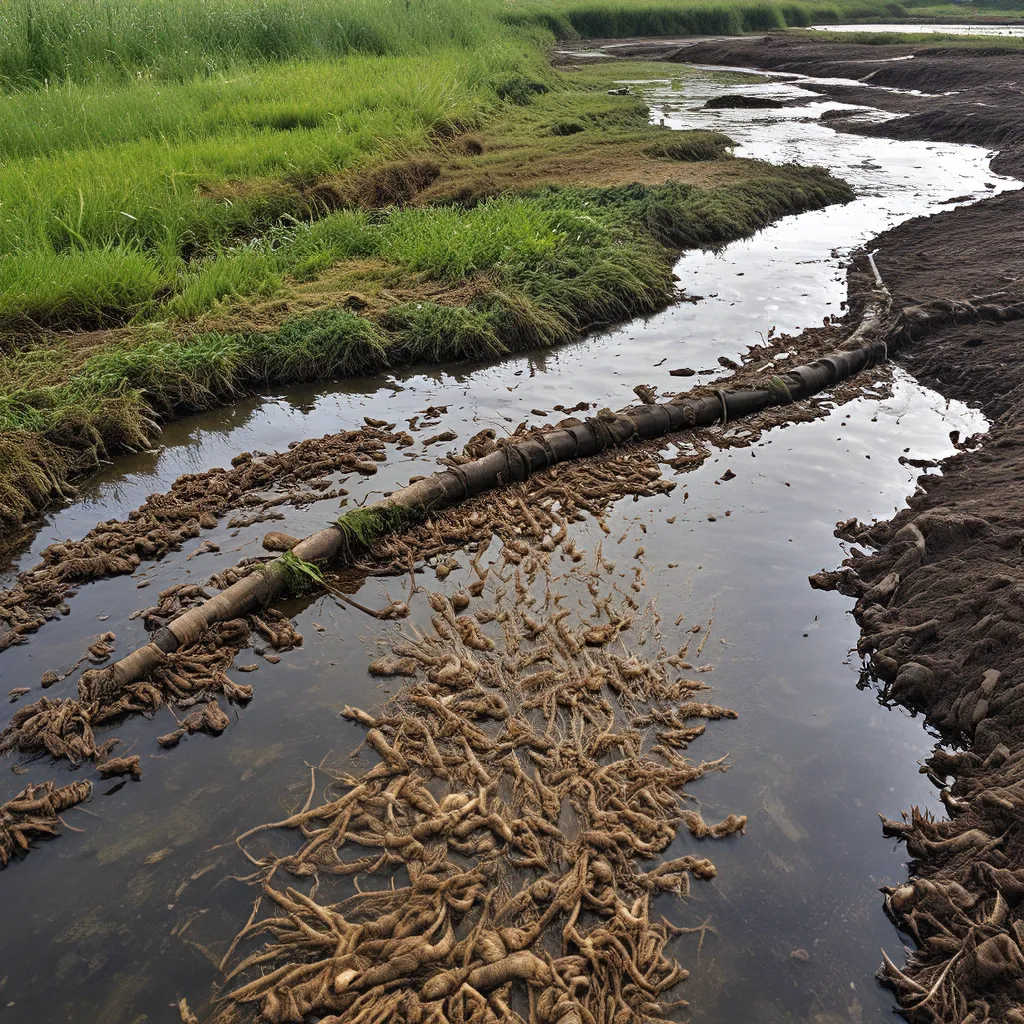
As a waste water treatment services professional, I’ve seen firsthand the incredible potential that lies in the often overlooked realm of organic waste streams. It’s a world teeming with untapped resources, just waiting to be harnessed and transformed into valuable bioproducts and bioenergy.
A Treasure Trove of Opportunity
Think about it – the United States alone has the potential to utilize 77 million dry tons of wet waste per year, which could generate a staggering 1,079 quadrillion British thermal units (Btu) of energy. That’s more than double the country’s total primary energy consumption in 2015! And that’s just the tip of the iceberg. When you factor in gaseous feedstocks and other waste streams, the total potential skyrockets to over 23 quadrillion Btu annually.
It’s a mind-boggling amount of untapped energy and resources, right under our noses. But the real game-changer here is the fact that these waste streams are available now, without the need for land-use changes or additional cultivation. They’re a ready-made, low-cost set of feedstocks that could be the key to unlocking a more sustainable and circular bioeconomy.
Rethinking Waste: From Liability to Asset
Historically, we’ve treated these organic waste streams as just that – waste. A problem to be dealt with, rather than an opportunity to be seized. But that mindset is starting to shift, thanks to the tireless work of researchers, innovators, and forward-thinking organizations like the Bioenergy Technologies Office (BETO).
BETO has been at the forefront of exploring various technologies and strategies to transform these waste streams into valuable commodities. One area of particular interest is hydrothermal processing, which holds the promise of being able to process diverse blends of wet waste feedstocks, paving the way for widespread deployment.
Imagine taking that municipal sludge or animal manure, and turning it into a diesel blendstock – a real-world example of what’s already been achieved through BETO-funded research. It’s a game-changing development that could revolutionize the way we think about waste management.
But hydrothermal processing is just the tip of the iceberg. BETO is also exploring alternatives to traditional anaerobic digestion (AD), which has its own limitations in terms of waste volume reduction and biogas cleanup. By tinkering with the process, they’re looking to unlock the potential to produce higher-value bioproduct precursors and liquid biofuels, rather than just biogas.
Closing the Loop: Waste-to-Energy Innovations
One of the most exciting aspects of BETO’s work is their holistic approach to waste-to-energy solutions. They’re not just focused on the technological innovations; they’re also tackling the challenges of policy, infrastructure, and community engagement.
Through their Waste-to-Energy Technical Assistance for State, Local, and Tribal Governments program, BETO is pairing national laboratory experts with decision-makers at the local level. Together, they’re addressing knowledge gaps, specific challenges, and planning strategies to advance waste-to-energy technologies in communities across the country.
This collaborative approach is crucial, because the reality is that waste management is inherently local. The characteristics of waste streams, the existing infrastructure, and the regulatory landscape all vary from one region to the next. By working hand-in-hand with state, local, and tribal governments, BETO is ensuring that the solutions they develop are tailored to the unique needs of each community.
And the impact of this work is already being felt. In 2021, BETO and the National Renewable Energy Laboratory (NREL) announced the Phase 1 selections for their Waste-to-Energy Technical Assistance program, providing strategic planning support, quantifying local organic waste resources, and tackling localized environmental impacts for 16 local government entities.
Towards a Circular Bioeconomy
As exciting as these developments are, the true potential of waste-to-energy solutions lies in their ability to contribute to a broader shift towards a circular bioeconomy. By harnessing the value inherent in organic waste streams, we can not only generate renewable energy and bioproducts, but also close waste loops and create new revenue streams for communities.
Imagine a future where your local wastewater treatment plant isn’t just a facility for cleaning water, but a hub of bioenergy and bioproduct production. Where the waste that once burdened your community becomes a valuable resource that powers your homes, fuels your vehicles, and supplies the raw materials for a wide range of sustainable products.
It’s a future that’s within our reach, thanks to the tireless efforts of organizations like BETO and the innovative researchers and entrepreneurs who are pushing the boundaries of what’s possible. And as a waste water treatment professional, I can’t help but feel excited about the possibilities that lie ahead.
Embracing the Complexity, Celebrating the Progress
Of course, transforming our waste streams into valuable resources isn’t without its challenges. As BETO has discovered through its workshops and stakeholder engagement, the waste-to-energy landscape is complex, with unique regional considerations, policy barriers, and technological hurdles to overcome.
But that’s precisely why the work BETO is doing is so crucial. By bringing together the brightest minds, the most relevant data, and the diverse perspectives of stakeholders, they’re tackling these challenges head-on. And they’re not just doing it for the sake of academic pursuit; they’re driven by a bold vision to harness the full potential of the bioeconomy and create a more sustainable future for all.
So, while the path forward may not be a straight line, I can say with certainty that the progress being made is worth celebrating. Every step towards transforming our waste streams into valuable resources is a step closer to a more circular, resilient, and prosperous economy. And that’s something that should inspire us all to roll up our sleeves and get to work.
After all, the United States has the potential to generate over 23 quadrillion Btu of energy from its waste streams annually. That’s an opportunity too big to ignore. So let’s dive in, embrace the complexity, and harness the power of the bioeconomy to create a brighter, more sustainable future for generations to come.